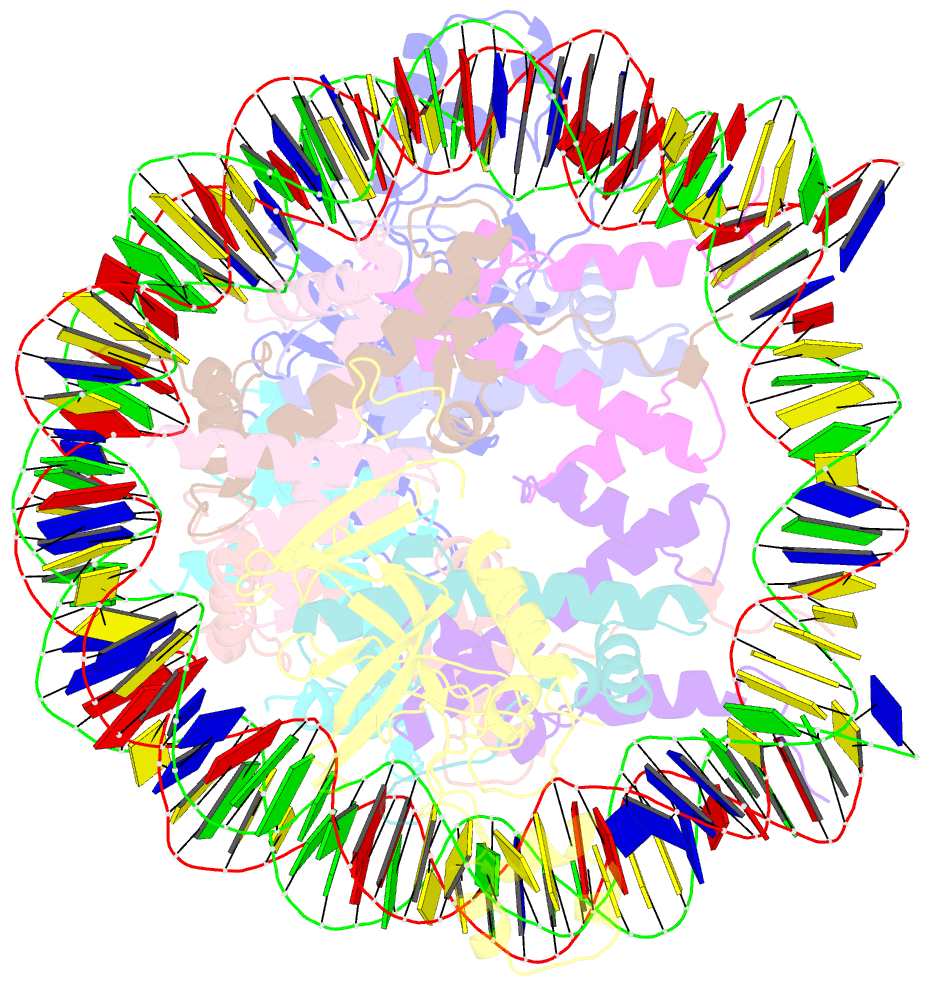Summary information and primary citation
- PDB-id
- 4jjn; SNAP-derived features in text and JSON formats;
DNAproDB
- Class
- DNA binding protein-DNA
- Method
- X-ray (3.09 Å)
- Summary
- Crystal structure of heterochromatin protein sir3 in complex with a silenced yeast nucleosome
- Reference
- Wang F, Li G, Altaf M, Lu C, Currie MA, Johnson A, Moazed D (2013): "Heterochromatin protein Sir3 induces contacts between the amino terminus of histone H4 and nucleosomal DNA." Proc.Natl.Acad.Sci.USA, 110, 8495-8500. doi: 10.1073/pnas.1300126110.
- Abstract
- The regulated binding of effector proteins to the nucleosome plays a central role in the activation and silencing of eukaryotic genes. How this binding changes the properties of chromatin to mediate gene activation or silencing is not fully understood. Here we provide evidence that association of the budding yeast silent information regulator 3 (Sir3) silencing protein with the nucleosome induces a conformational change in the amino terminus of histone H4 that promotes interactions between the conserved H4 arginines 17 and 19 (R17 and R19) and nucleosomal DNA. Substitutions of H4R17 and R19 with alanine abolish silencing in vivo, but have little or no effect on binding of Sir3 to nucleosomes or histone H4 peptides in vitro. Furthermore, in both the previously reported crystal structure of the Sir3-bromo adjacent homology (BAH) domain bound to the Xenopus laevis nucleosome core particle and the crystal structure of the Sir3-BAH domain bound to the yeast nucleosome core particle described here, H4R17 and R19 make contacts with nucleosomal DNA rather than with Sir3. These results suggest that Sir3 binding generates a more stable nucleosome by clamping H4R17 and R19 to nucleosomal DNA, and raise the possibility that such induced changes in histone-DNA contacts play major roles in the regulation of chromatin structure.





